Exclusive: Here Is A Draft Of Trump’s Nuclear Review. He Wants A Lot More Nukes.
His first Nuclear Posture Review: more nukes, more posturing.
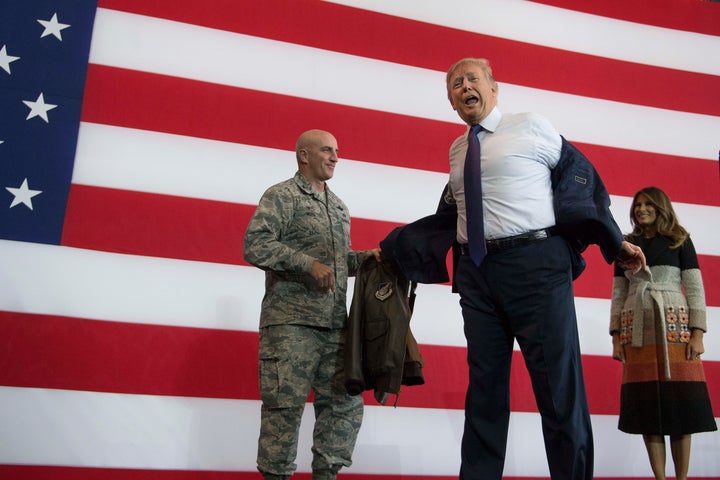
VIDEO OF PENTAGON'S PRESENTATION:
FULL DOCUMENT IN PDF
In his first year in office, President Barack Obama gave a landmark address in Prague in which he famously affirmed “clearly and with conviction America’s commitment to seek the peace and security of a world without nuclear weapons.” The commitment to total nuclear disarmament was a major departure from the George W. Bush administration — the first time, in fact, that the United States had declared a nuclear-free world a major policy goal.
Now, eight years later, it’s the Trump administration’s turn to lay out its nuclear weapons policy. And according to a pre-decisional draft of the 2018 Nuclear Posture Review (NPR) obtained by HuffPost, Trump’s Department of Defense has gone a decidedly different route: new nukes, for no good reason.
The final version of the NPR is scheduled to be released in February. You can read the draft in full at the bottom of this article. A Defense Department spokesperson declined to comment on the draft, saying that the agency “will not discuss pre-decisional drafts of the document.”
In October, NBC reported that President Trump had told a gathering of high-ranking national security leaders that “he wanted what amounted to a nearly tenfold increase in the U.S. nuclear arsenal.” While the report doesn’t nearly go that far, it does call for the development of new, so-called low-yield nuclear weapons — warheads with a lower explosive force.
The logic of those pushing for the development of smaller nukes is that our current nuclear weapons are too big and too deadly to ever use; we are effectively self-deterred, and the world knows it. To make sure other countries believe that we’d actually use nuclear force, the thinking goes, we need more low-yield nukes.
But official language around nuclear weapons is slippery and euphemistic. “Low yield” suggests a softer sort of weaponry, diet nukes, until you realize that the bombs dropped on Hiroshima and Nagasaki were technically “low-yield” weapons.
Trump’s NPR draft euphemizes the euphemism, referring to low-yield weapons as “supplements” that will “enhance deterrence.” The document claims that Russia is threatening to use these smaller nuclear weapons; the U.S. needs to match and deter the Russians in kind.
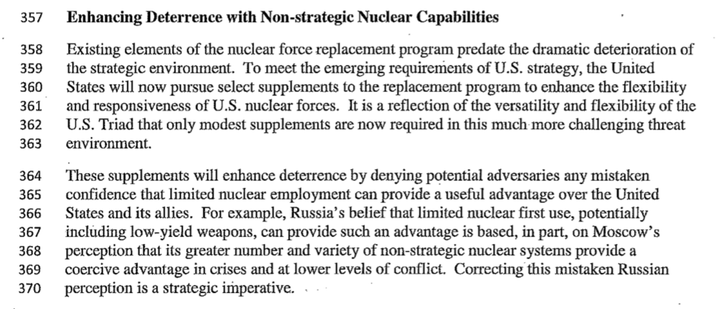
What goes unmentioned is that we already have over 1,000 nuclear warheads in our arsenal with low-yield options, to say nothing of the fact that the more nuclear weapons you introduce into the world, the more likely it is that they’ll one day be used.
“Making the case that we need more low-yield options is making the case that this president needs more nuclear capabilities at his disposal,” said Alexandra Bell, a former senior adviser at the State Department and current senior policy director at the Center for Arms Control and Non-Proliferation, “regardless of the fact that we have 4,000 nuclear weapons in our active stockpile, which is more than enough to destroy the world many times over. So I don’t think it makes a convincing case that we somehow lack capabilities. And, in fact, I don’t think you can make the case that this president needs any more capabilities.”
The draft itself doesn’t do all that much to convince anyone of the necessity of these low-yield weapons. One tactic it uses right up front is fear. Look no further than Page 6:
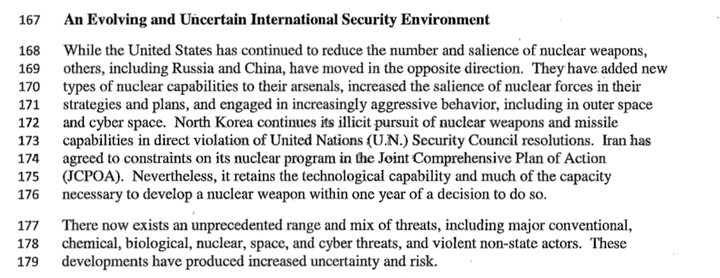
This is a slightly darker picture than reality would support, according to Laura Holgate, a special assistant to Obama for weapons of mass destruction terrorism and threat reduction and a former U.S. ambassador to the International Atomic Energy Agency in Vienna. “The notion that there are uncertainties is actually not new,” Holgate told HuffPost. “That’s always going to be true about the international environment. And there were references to uncertainties in the 2010 report, as well. But this dark perspective and this uncertain view underpin the decisions to walk back some of the decisions or postures presented in the 2010 report.”
And this new low-yield weapon initiative is one of those reversals. The 2010 NPR essentially removed one tactical low-yield weapon from our arsenal. The Trump administration wants to bring more low-yield weapons back in. And when this latest NPR draft does attempt to defend the decision, it immediately contradicts itself.

“If you’re saying that having low-yield nuclear weapons does not lower the threshold for use, then you’re essentially saying there’s no difference between using a low-yield and a high-yield weapon,” said Bell. “You’re saying that we would use a high-yield weapon if we have to — or one of the low-yield weapons we already have in our stockpile. If you’re saying adamantly in here that this won’t change our current posture choices, it basically negates your reason to have this capability in the first place.”
What’s more, the report never really explains how any of these new capabilities would alter our security environment.
“By their own argument, they’re concerned that somehow the other side thinks that our current stockpile is getting in the way of our willingness to use nuclear weapons,” explained Anthony Wier, a former deputy assistant secretary in the State Department’s Bureau of Legislative Affairs who now works on nuclear weapons policy for the Friends Committee on National Legislation, a Quaker lobbying organization. “Outside of the drafters of this posture review, I can hardly think of any Americans who would have woken up this morning worrying that Donald Trump was not willing enough to use nuclear weapons.”
And yet the document argues that somehow our adversaries do think that, and so we need additional options to close this imagined credibility gap. What’s missing is any evidence to support the idea that Russia or any other country believes this to be true.
One possible reason for this omission is that no such evidence exists. Back in June, Hans Kristensen, the director of the Nuclear Information Project at the Federation of American Scientists, wrote that “anyone can come up with a scenario that requires a new weapon. What’s missing from the debate is why the existing and planned capabilities are not sufficient. The United States already has flexible nuclear forces, advanced conventional capabilities, tailored war plans and low-yield warheads in its arsenal.”
What the posture review makes clear, however, is that the Trump administration wants to produce a considerable number of new nukes. This would represent a break from precedents established even by Republican administrations. The George W. Bush administration cut our nuclear stockpile by more than half, down to roughly 5,000 warheads. The George H.W. Bush administration cut our stockpile by nearly 9,500 warheads. “Basically everything about this document screams that we’re probably only going up,” Wier said. “There’s no reduction listed anywhere that I could find.
“That’s the bottom line, right? Building a lot more nuclear weapons and spending a lot more money to build it. At times it feels like they want to buy a can opener with a screwdriver attachment, but they also want to pay for a screwdriver with a can opener attachment. There’s a lot of redundancies and duplications, and they need all these extra things to keep you safe. At times, it really does feel like a lot of solutions in search of problems.”
There are other significant departures from the 2010 NPR. The role of diplomacy in nuclear relations is mostly ignored. The report does pay lip service to NATO, and there are nods here and there toward the importance of diplomatic relations.

But Bell wasn’t buying it. “If the circumstances that we now find ourselves [in] are as dire as they paint them,” she said, “it doesn’t make sense to me that you wouldn’t have put all of the relevant officials needed to do good nuclear policy diplomacy into place immediately. We’re still waiting for a lot of the leaders who should be doing these roles, particularly [in] the State Department. So the critical nature of our current threat environment they describe doesn’t really match their staffing plans.” It’s not just the State Department staffing that’s been neglected. The National Nuclear Security Administration, the very agency responsible for modernizing our nuclear arsenal, is still missing a number of appointees.
Even more strikingly, the document appears not to contain a single reference to Article VI of the U.N. Treaty on the Non-Proliferation of Nuclear Weapons, which obliges the United States, as one of the signatories, to move in the direction of nuclear disarmament. Other countries that have committed to the weapons ban treaty might be less likely to cooperate with the United States on nuclear matters, Holgate said.
The document does mention disarmament briefly in the introduction.

“What’s interesting about that is that it fudges it a little bit,” Holgate said. “Not as badly as it could have, but it uses a lot of vague weasel words like ‘committed,’ ‘efforts,’ ‘support’ and ‘ultimate.’ And then, it mushes bio and chem in with nuclear. So this is not a clear commitment.”
The report is also noticeably vague when it comes to the Comprehensive Nuclear Test Ban Treaty, a global ban on nuclear explosive testing. While the 2010 report reaffirms nearly a dozen times the United States’ dedication to maintaining its stockpile without nuclear testing, this latest NPR draft says the country will not resume nuclear testing “unless necessary.”

The document does at least reaffirm U.S. support for NATO.

But what the report states and what the president tweets are two very different things.
“Obviously it’s very good to see in here that the NATO alliance is the most important defensive alliance in history,” noted Bell. “But saying it in this posture review and waiting until the next time the president says NATO countries aren’t paying him enough money — you’re sort of waiting for the shoe to drop. At the end of the day, our elected leader changes his mind often and without a lot of explanation for the change. So that very much does endanger some of the ideas put forth in this document.”
The document is at pains to assure its audience that Trump isn’t going to start firing off nukes on a whim.

And based on reported fears about Trump’s erraticism, the world’s leaders could definitely use some reassuring. Just last August, CNN reported that Trump’s “wildly variant public interpretations of violent, anti-Semitic rallies by neo-Nazis and white supremacists” had “caused European leaders to shake their heads in bewilderment.” And South Korea is, if not more fearful, then at least equally as terrified of Trump mouthing off as it is of Kim Jong Un sitting overhead. But, of course, none of that has stopped Trump so far.
“This is clearly not Trump’s policy,” said Jon Wolfsthal, director of the Nuclear Crisis Group and former senior director at the National Security Council for Arms Control and Nonproliferation. It is, Wolfsthal said, a representation of Secretary of Defense Jim Mattis’ policy and Secretary of State Rex Tillerson’s policy and Joint Chiefs Chairman Gen. Joseph Dunford’s policy. “And that will reassure people who hope and pray that the axis of adults is somehow going to constrain President Trump’s impulses.”
Got a tip? Email me at ashley.feinberg@huffpost.com.



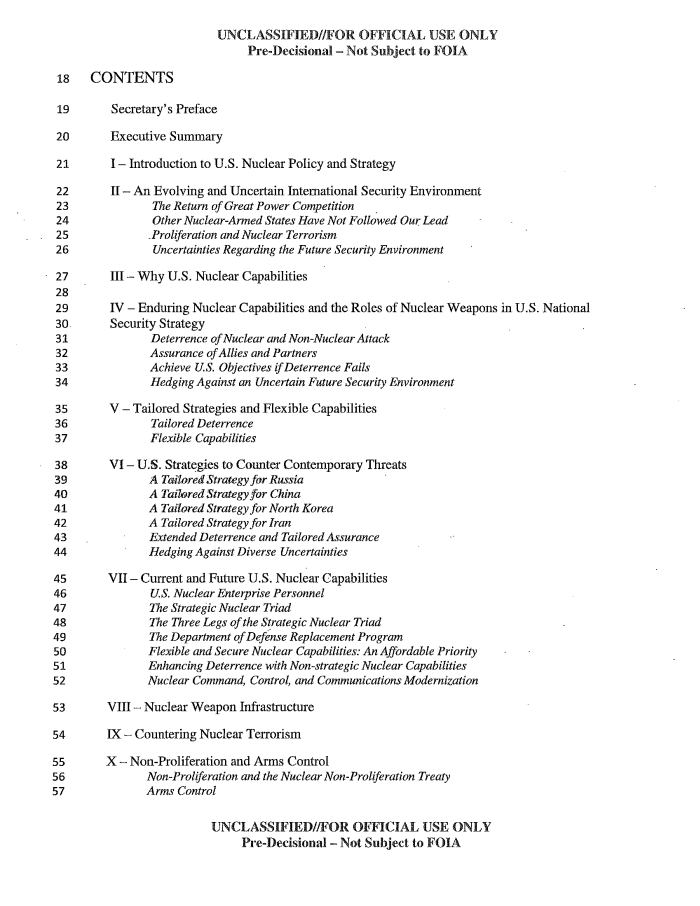
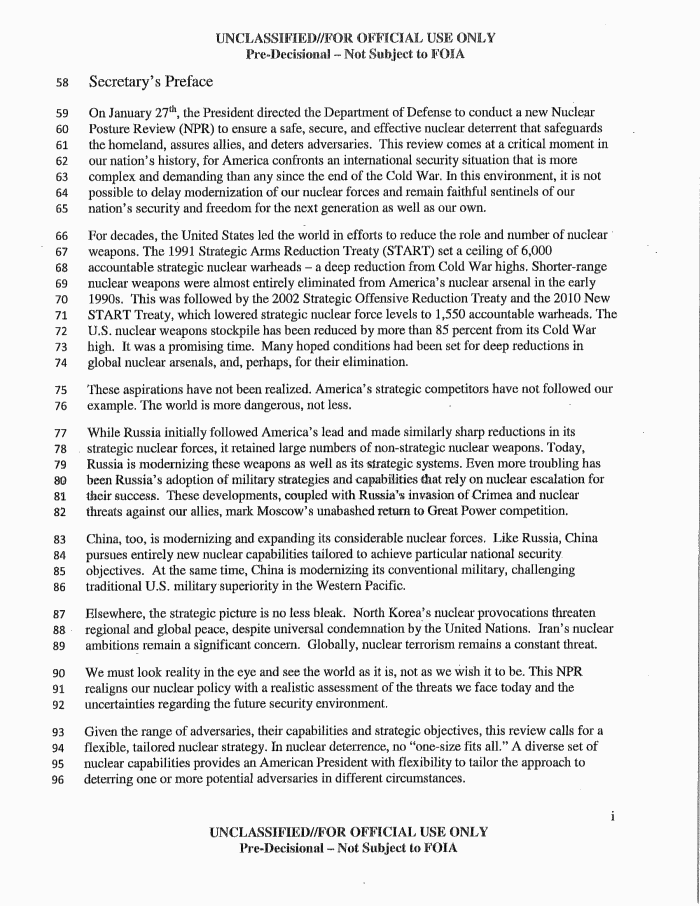





No comments:
Post a Comment